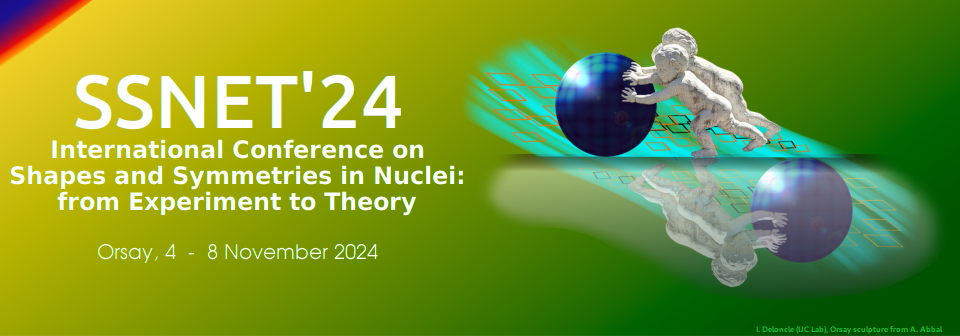Orateur
Description
We studied cross-section distributions measured as a function of scattering angle for multiple excited states in $^{106}$Cd, populated via inelastic scattering on a $^{92}$Mo target. The balance between Coulomb and nuclear interaction in the population of individual states was explored by comparing the experimental $\gamma$-ray yields with the predictions obtained with the GOSIA Coulomb-excitation code. We demonstrated that from such an ``unsafe'' Coulomb-excitation measurement it is possible to correctly evaluate reduced transition probabilities between certain low-lying states. In this way, we obtained new information on the collectivity of the presumably oblate structure built on the 0$^+_3$ state, as well as on the role of octupole correlations in this nucleus. By comparing our observations with the results of previous spectroscopic studies of $^{106}$Cd, we were also able to propose a rearrangement of the level scheme including notably K=2 and K=4 structures. These results, as well as remaining puzzles concerning the low-energy part of the $^{106}$Cd level scheme, motivated a future high-precision beta-decay study into $^{106}$Cd, which has been recently accepted at TRIUMF.

